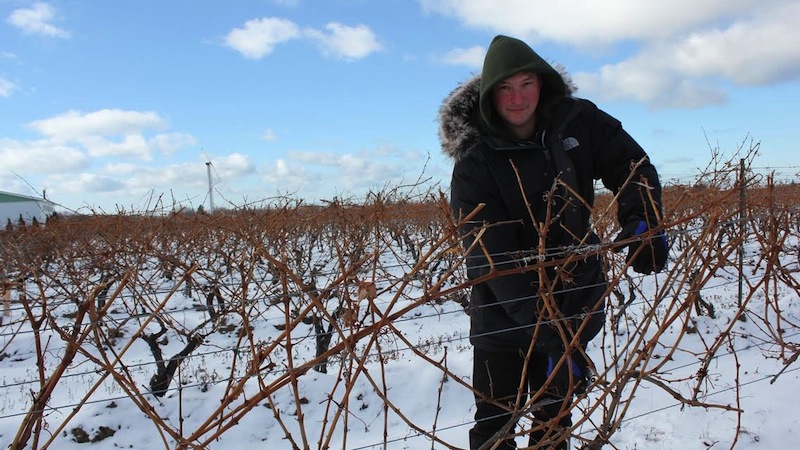
Ontario is in the midst of yet another deep freeze this week, with the worst of it coming Wednesday, at least in Niagara, with lows predicted to approach -30 C.
Obviously, these are not the best of times for grape vines, which are still recovering from last winter’s “polar vortex” which caused widespread damage to the most fragile grapes grown in Ontario.
Most recent sampling conducted by Brock University’s CCOVI VineAlert program in Niagara shows bud survival rates predicated as low as 10% for Chardonnay in the Vinemount Ridge sub-appellation, Cabernet Franc at 17% and the usually hardy Riesling at a 32% survival rate. Those most recent numbers were posted a few days ago here on Wines In Niagara.
Jim Willwerth, the senior scientist in viticulture at Brock University’s Cool Climate Oenology and Viticulture Institute, says his team is in the process of following up across all appellations and sub-appellations as part of the VineAlert program.
Willwerth, seen pictured at the top of this post, offered these points as a snap shot of the current state of the vines, and puts bud survival rates in perspective.
- Through VineAlert, we found that bud cold acclimation was delayed this year compared to some other vintages with it being a later, cool season. The good thing is that the vines had reached their yearly maximum hardiness prior to most of the coldest weather we had. Vines still haven’t lost any hardiness and we are nearing the end of February.
- This has been a complicated winter with many different types of cold events. Some were typical radiation freezes on calm, clear nights with good temperature inversions. These were ideal for wind machine use and our bud survival data from some December and January events showed their effectiveness at reducing freeze injury. We have also had long, sustained cold periods with winds where there were no inversions and no protection methods could be used nor be effective. On some occasions winds died down and growers could utilize some wind machines but inversions were small or inconsistent in some cases. Duration of cold events have also been highly variable across Ontario. Some were long, slow events and others events were quick drops in temperatures. These all impact the amount of cold injury the vines may incur so fortunately growers have tools like VineAlert and wind machines to mitigate some of these events.
- These types of cold events varied across appellations and sub-appellations. The microclimate of the vines will also vary at each site.
- Previous winter injury will also likely come into play and compromised vine health may lead to more cold injury in those vines.
- These back to back winters are something that are definitely not common from a historical perspective when looking at data from Vineland Station over the past 30 years.
- Most importantly, it is still too early to relate bud survival to predicted crop size and the spring and early summer will tell the true story. There is cold injury out there and all regions will be impacted at some level. Bud survival numbers do not necessarily equate directly to crop levels (i.e., 60% bud survival doesn’t mean 60% of a crop). Pruning strategies can mitigate some bud loss by leaving extra buds for example. There are many factors to consider that will ultimately impact 2015 crop sizes. Vineyard site, topography, variety/clone, vine health/previous winter injury, viticulture practices, vine age as well as use of wind machines (or other protection methods) and pruning strategies will all impact the size of the crop at each location.








Great explanation Jim and well written!!